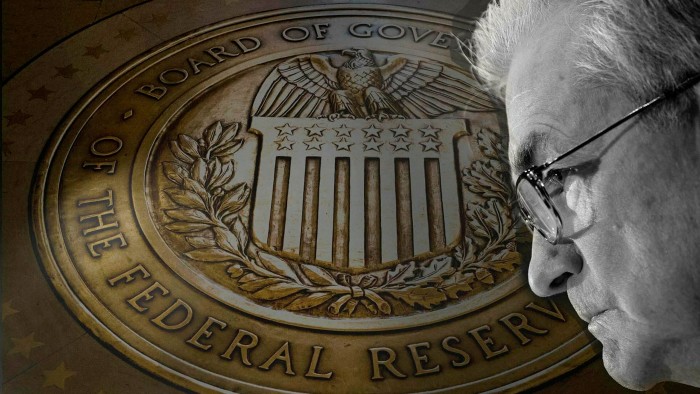Why inflation is at risk of overshooting the Fed’s comfort zone

Roula Khalaf, Editor of the FT, selects her favourite stories in this weekly newsletter.
The writer is chief economist at Morgan Stanley
A comeback in inflation is no less likely because it has been absent for the past 30 years.
On the contrary, the conditions are ripe for US inflation to overshoot 2 per cent, the level that the US Federal Reserve gauges as consistent with its mandate. Under its new approach unveiled last year, the Fed has signalled it will tolerate an overshoot of the target for a period of time to compensate for persistently low inflation.
The risk, as I see it, is that inflation could overshoot the overshoot levels the Fed is comfortable with.
Until recently, investors dismissed the idea of a rapid recovery, believing that the recession led to significant scarring and a return to normality would take time. The pace of the recovery has therefore flummoxed most market participants.
I have viewed a V-shaped recovery as the most likely outcome. As Covid-19 was an exogenous shock, I thought the damage to the private sector’s risk appetite would be limited. We also had a policy response that was timely, sizeable and co-ordinated, helping to lay the foundation for a speedy recovery.
On our forecasts, by the third quarter of this year, the US economy will recoup its lost output and rise above its path before the coronavirus shock. This is a remarkable outcome considering the initial size of the event, and even more so since the US economy performed well below its potential for years after the 2008 financial crisis.
As demand surges, so will inflationary pressures. But will this be a transitory phenomenon or lead to a more sustained rise? I would argue that the driving forces of inflation are already aligned and a regime shift is under way.
The change in the conduct of fiscal policy is pronounced. This time, active fiscal policy has gone well beyond filling the output hole. To date, US households have lost $490bn in income but have received $1.3tn in transfers. The total amount of transfers will undoubtedly rise with the passage of the next fiscal stimulus package.
Fiscal policy activism was triggered by the onset of the recession, but policymakers were under pressure beforehand to address income inequality. By all accounts, fiscal policy will be markedly more expansionary in this cycle, bringing with it an inflationary impulse.
Typically, inflation meets its match in the form of monetary tightening. But the Fed has recast its objectives, moving to flexible average inflation targeting and aiming for maximum employment that achieves a more “broad-based and inclusive goal”.
In other words, policymakers are targeting a high-pressure economy — an environment that has its benefits but is not without costs. The price to pay will be sustained higher prices.
Based on what we know now, the most likely outcome is a moderate overshoot of inflation. However, it would be negligent to dismiss the upside risks to inflation.
First, US households will have an excess saving war chest of $2.1tn by the end of March assuming the passage of the $1.9tn proposed stimulus package. Vaccination efforts are ramping up and the economy is on a path to reopening more broadly within the next month or two. The recovery is gaining significant momentum and is poised to take gross domestic product growth to 7.3 per cent in 2021.
If households feel more confident, excess saving will be drawn down at a faster clip, generating a further surge in demand.
The second and more technical issue is assessing the rate of US unemployment that would trigger inflationary pressures. Economists term this the natural rate of unemployment.
Every recession triggers restructuring. This time, the restructuring has been rapid, yet policymakers are striving to get back to lower rates of unemployment at a faster pace than previously. Inflationary pressures could therefore emerge at a higher unemployment rate than in the last cycle.
For now, with inflation and unemployment far from its goals, the Fed can still convince investors that rate rises will be late and gradual. However, the challenge is that the recovery will be rapid, and progress towards its goals will come sooner than the central bank expects. When it does, markets will reassess the path of monetary policy, but will probably face less pushback from the Fed, leading to more volatility.
If inflation and inflation expectations overshoot significantly, most Fed officials and watchers suggest that it can act quickly to nip inflation in the bud. While this may be true, at that point the rate rises will not be gradual. Recent market moves may feel disruptive to some, but we see the risk of a truly disruptive shift should the overshoot in inflation indeed overshoot.
Comments